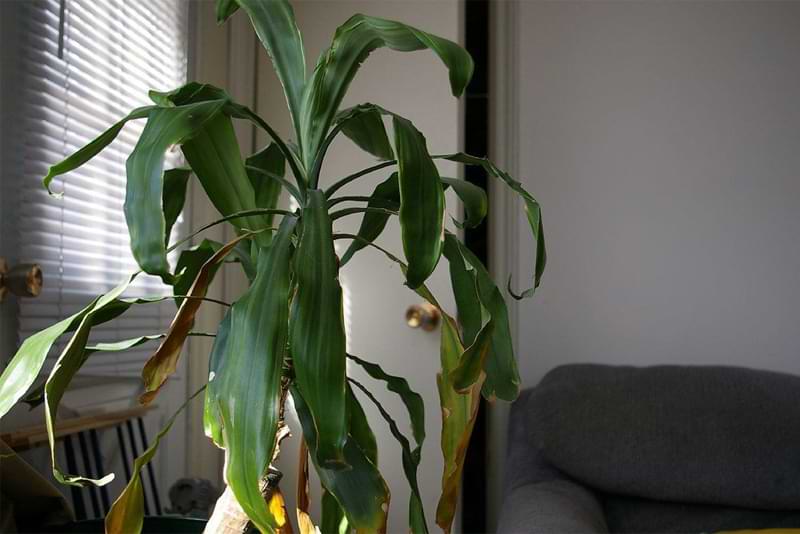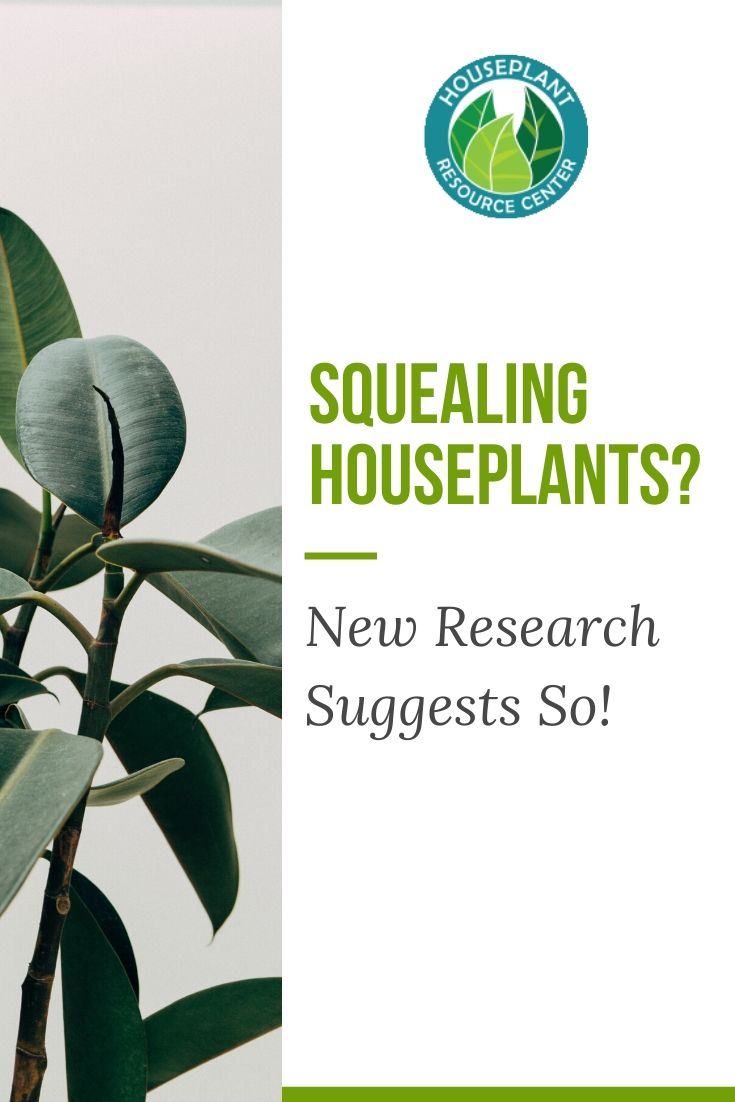Squealing Houseplants? New Research Suggests So!
All houseplant owners (especially the self-proclaimed “black thumbs”) know that plants show plenty of signs to let us know they’re stressed.
Our houseplants might turn yellow or brown, develop spots, droop, or dry out when they need water, light, nutrients, etc. They might also do this when they want LESS water, light, or nutrients (and sometimes we don’t know which!).
But a new study from Tel Aviv University in Israel suggests that some plants might exhibit another sign when they’re stressed: screaming.

Yup. You read that right. Screaming. Squealing. Yelping. Whatever you want to call it, this is big news!
In this study, researchers studied tomato and tobacco plants and found that both of these plants emit sounds when stressed from too little water or when their stem was cut. The sounds aren’t necessarily “screaming,” of course, but that’s generally what we call sounds made from distress, right?
Of course, we humans could never hear these sounds without special equipment. The sounds were in the range of 20 to 100 kilohertz, which an unaided human ear could never pick up. However, some insects and animals might hear if they got close enough.
It’s unclear exactly how the plants make these sounds. Cavitation seems to have something to do with it, so it makes sense that plants with more open cavities in their tissues would be able to make more sounds.
Researchers were even able to differentiate different kinds of sounds to indicate which stressor the plant was complaining about! They also speculated that other plants could “hear” these sounds and react to them, which could come in handy in a drought.
Even more interesting, they found that tomato plants are generally noisier than tobacco plants, which could suggest that some plants are more easily stressed. Or maybe they are just more prone to making noise. (We all know people like that, right?)
They believe other plants may make sounds when stressed as well!
What does this mean for houseplants?
Well, we don’t know yet. But it suggests that there’s much more to learn from Mother Nature.
Who knows? This could open doors in agriculture for farmers to closely monitor their plants for early signs of stress.
For us indoor gardeners, this is still really interesting. As plant parents, we get really attached to our plants. We often name them, personify them, and, well, use terms like “plant parents.” We are overjoyed to see our plants thriving and devastated when our plant babies are stressed.
If anything, this news might make us personify our indoor plants even more!

The next time one of your plants looks like this, just imagine it screaming. You’re welcome.
After reading this article, I’ll probably imagine any droopy plant screaming at me to get the watering can already! Whether you find this information amusing or if screaming plants will haunt your dreams for years to come, let’s take care of our plants!
Let’s keep our plants happy!
If the idea of screaming houseplants is burned into your brain forever, make sure to check out our indoor plant care tips to keep your plants happy and avoid traumatizing yourself or your plant babies.
Here are a few great articles to get you started:
- 7 Signs You’re Over-Fertilizing Your Houseplant & How to Fix It
- Why Plants Need to Be Repotted
- Black Thumb No More: What to Do When Your Houseplants Start Dropping Leaves
- The Perfect Root Rot Treatment for Your Indoor Plants
Essentials:
- Make sure you’re giving your plants the right nutrients! Our Indoor Plant Food works perfectly for almost all indoor plants, and it’s easy to use. Grab it here!
- Use our premium well-draining potting soil for your houseplant.
- Protect your houseplant from insects, bacteria, and fungus with our Houseplant Leaf Armor. (As an added bonus, the Leaf Armor also cleans and adds shine to your houseplant’s leaves!)
- Use a moisture meter like this one to always know how thirsty your plant is.
To learn more:
- Join us for our free Top Secrets From Fiddle Leaf Fig Growers Webinar or enroll in our free Advanced Fiddle Leaf Fig Care Course.
- Read The Fiddle Leaf Fig Expert, your complete guide to growing healthy fiddle leaf fig plants. The book is available in full-color paperback or Kindle edition on Amazon now!
- Click to join our community on Facebook: Fiddle Leaf Fig Plant Resource Group.




